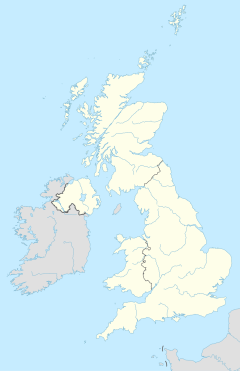Our website is made possible by displaying online advertisements to our visitors.
Please consider supporting us by disabling your ad blocker.
Liverpool Maritime Mercantile City
| Liverpool Maritime Mercantile City | |
|---|---|
 Liverpool Pier Head | |
| General information | |
| Architectural style | Victorian |
| Location | Liverpool, North West England, England, United Kingdom |
| Coordinates | 53°24′24″N 2°59′40″W / 53.40667°N 2.99444°W |
| Construction started | 1841 |
| Completed | 1847 |
| Inaugurated | 1846 |
Former UNESCO World Heritage Site | |
| Official name | Liverpool – Maritime Mercantile City |
| Criteria | Cultural: (ii), (iii), (iv) |
| Designated | 2004 (28th session) |
| Reference no. | 1150 |
| Region | Europe and North America |
| Delisted | 2021 (44th session) |
| Website | |
| www | |
Liverpool Maritime Mercantile City is a former UNESCO designated World Heritage Site in Liverpool, England, that comprised six locations in the city centre including the Pier Head, Albert Dock and William Brown Street,[1] and many of the city's most famous landmarks.
UNESCO received Liverpool City Council's nomination for the six sites in 2003 and sent ICOMOS representatives to carry out an evaluation on the eligibility for these areas to be given World Heritage Site status. In 2004, ICOMOS recommended that UNESCO should award Liverpool Maritime Mercantile City World Heritage Site status.[2] Its inclusion by UNESCO was attributed to it being "the supreme example of a commercial port at a time of Britain's greatest global influence."[3]
In 2012, the site was added to the List of World Heritage in Danger due to the proposed Liverpool Waters project. In 2017, UNESCO warned that the site's status as a World Heritage Site was at risk of being revoked in light of contemporary development plans, with English Heritage asserting that the Liverpool Waters development would leave the setting of some of Liverpool's most significant historic buildings "severely compromised", the archaeological remains of parts of the historic docks "at risk of destruction", and "the city's historic urban landscape [...] permanently unbalanced."[4]
In 2021, Liverpool City Council's planning committee approved Everton F.C.'s new £500 million football stadium in Bramley-Moore Dock, within Liverpool Waters. This decision was ratified by the Secretary of State for Housing, Communities and Local Government, Robert Jenrick.[5] Following this, UNESCO's World Heritage Committee voted to revoke the site's World Heritage status.[6]
- ^ "Liverpool – Maritime Mercantile City". UK Local Authority World Heritage Forum. Archived from the original on 23 April 2008. Retrieved 9 October 2008.
- ^ Cite error: The named reference
ICOMOSwas invoked but never defined (see the help page). - ^ "Welcome to Liverpool World Heritage". Liverpool City Council. Archived from the original on 22 February 2008. Retrieved 9 October 2008.
- ^ Perraudin, Frances (3 October 2017). "Liverpool faces up to world heritage removal threat with taskforce". the Guardian.
- ^ "Bramley-Moore Dock: Everton cleared to build new £500m stadium". BBC News. 26 March 2021. Retrieved 21 July 2021.
- ^ Cite error: The named reference
:2was invoked but never defined (see the help page).
Previous Page Next Page
Ліверпульскі порт BE Kuta Maritim Liverpool BJN Ciutat Marítima Mercantil de Liverpool Catalan Puerto de Liverpool Spanish Liverpoolgo merkataritza eta itsas-hiria EU Port marchand de Liverpool French Bandar Maritim Liverpool ID Liverpool, città mercantile marittima Italian 海商都市リヴァプール Japanese Maritieme handelsstad Liverpool Dutch





